The Pentagonal Bipyramid
The pentagonal bipyramid is a polyhedron bounded by 10 isosceles triangles, 15 edges, and 7 vertices. It is the dual of the pentagonal prism. It belongs to the class of duals of uniform polyhedra, which also includes the Catalan solids.
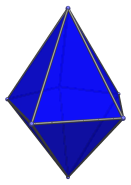
The faces are transitive isosceles triangles with 2 short edges and 1 long edge. The edge length ratio is 3−φ : 2, or approximately 0.691 : 1, where φ=(1+√5)/2 is the Golden Ratio.
Note that the pentagonal bipyramid as the dual of the (uniform) pentagonal prism should not be confused with Johnson solid J13, which is also a pentagonal bipyramid, but with regular faces—equilateral triangles rather than isosceles triangles. The dual of J13 is a non-uniform pentagonal prism, having rectangular rather than square faces, with edge length ratio is √(25−11√5) : √2, or approximately 0.449 : 1.
Projections
The following are images of the pentagonal bipyramid from various viewpoints:
| Projection | Description |
|---|---|
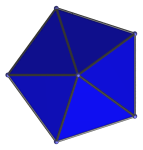 |
Top view. |
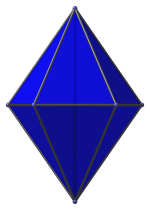 |
Edge-centered side view. |
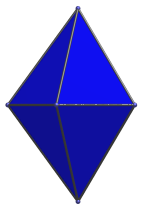 |
Oblique side view. |
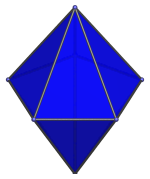 |
Face-centered view. |
Animation
Here's an animation of the pentagonal bipyramid rotating around its vertical axis:
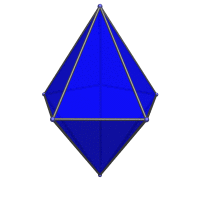
Coordinates
The Cartesian coordinates for the pentagonal bipyramid are:
- (0, 0, ±(6φ+2)/5)
- (−√((10+2√5)/5), 0, 0)
- (−√((5−2√5)/10), ±φ, 0)
- (√((5+2√5)/5), ±1, 0)
These coordinates correspond with a dual pentagonal prism of edge length (3φ−4).




